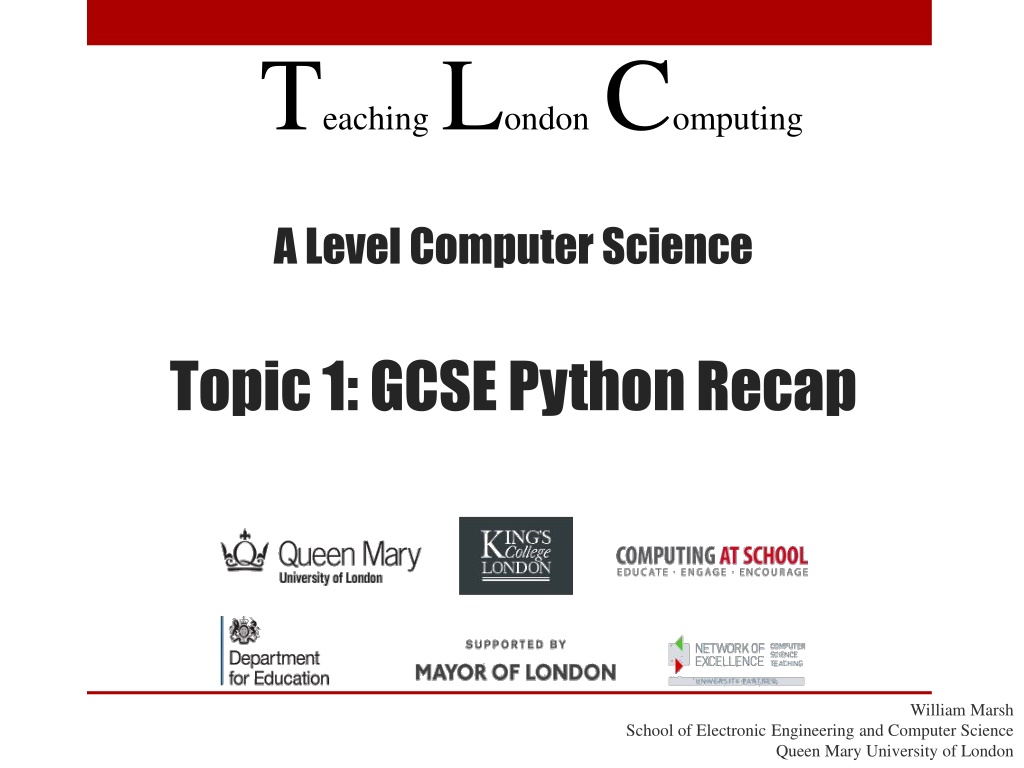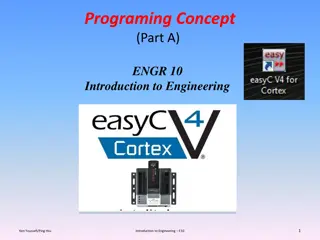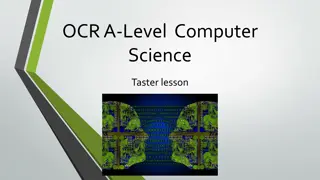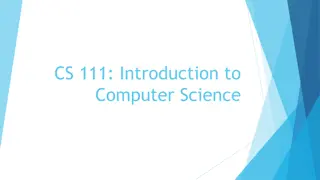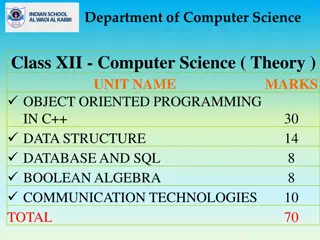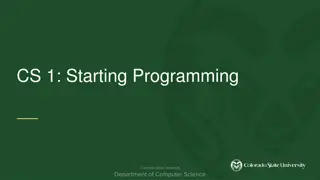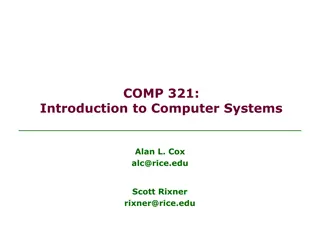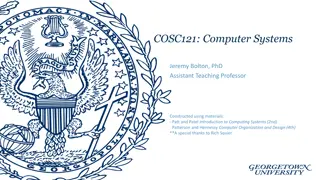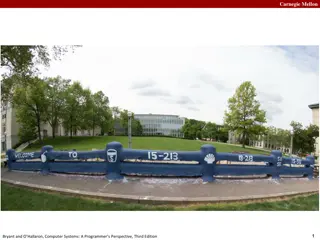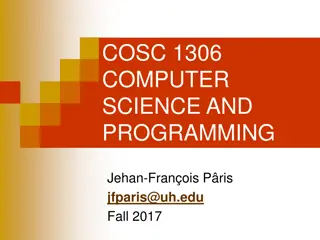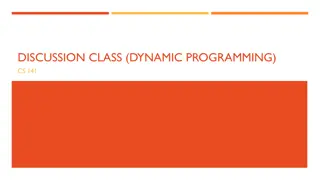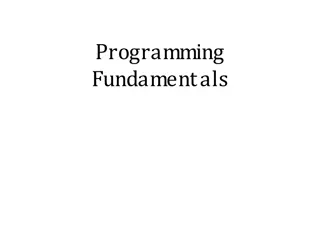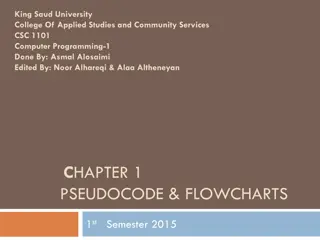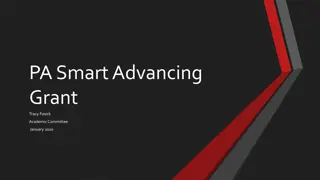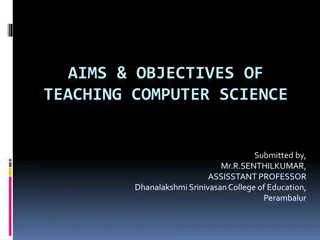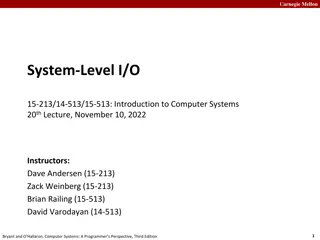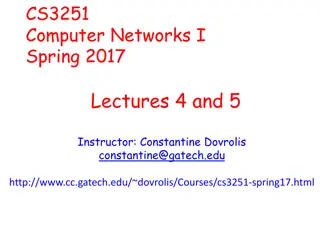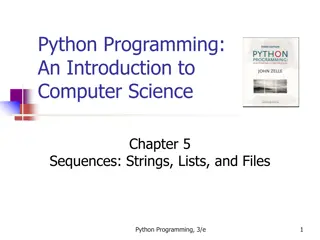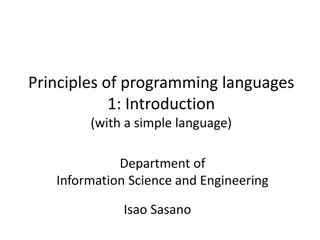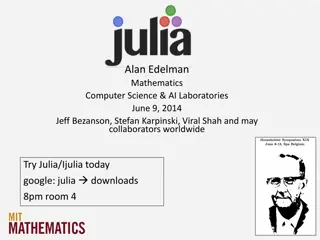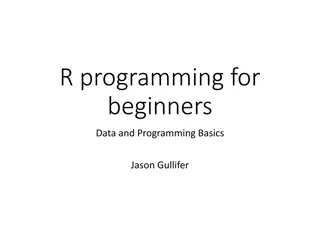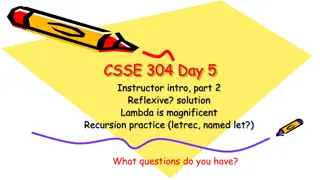Introduction to Programming Concepts in A-Level Computer Science
This material covers a recap of GCSE Python programming concepts and outlines the course contents for A-level curricula at William Marsh School of Electronic Engineering and Computer Science, Queen Mary University of London. It explores the essence of programming, problem-solving techniques, computational thinking, and practical exercises in a structured manner, preparing students for more advanced programming challenges.
Download Presentation

Please find below an Image/Link to download the presentation.
The content on the website is provided AS IS for your information and personal use only. It may not be sold, licensed, or shared on other websites without obtaining consent from the author. Download presentation by click this link. If you encounter any issues during the download, it is possible that the publisher has removed the file from their server.
E N D
Presentation Transcript
TeachingLondon Computing A Level Computer Science Topic 1: GCSE Python Recap William Marsh School of Electronic Engineering and Computer Science Queen Mary University of London
Aims What is programming? Recap GCSE Python Programming concepts Learning programming Outline the course Contents A level curricula Materials
What is Programming? What is the essence of Programming? Do we learn Python or Programming?
Problem: Largest Item Find the largest one 27 12 53 13 25 68 18 66 23 15 36 Definition: One of the numbers in the list No other number in the list is larger Programmer needs a recipe for finding it!
Problem: Largest Item Here is a recipe largest first item while more items in list item next item if item greater than largest largest item Not yet a program!
Programming Recipe / procedure / algorithm for solving a problem in a language understood by a computer Problem Recipe Program Problem solving Writing a Program
Computational Thinking ... the thought processes involved in formulating problems and their solutions so that the solutions are represented in a form that can be effectively carried out by an information-processing agent Concepts algorithmic thinking: developing steps decomposition: spotting the parts of a problem abstraction: ignoring unnecessary detail generalisation: making the specific more general evaluation: how good is it?
Practical Exercises 1.1 1.3 Describe a recipe for finding the two largest items in a list
Challenge Solution Describe a recipe for finding the two largest items in a list flrgst max(first item, second item) slrgst min(first item, second item) while more items in list item next item if item GT slrgst if item GT flrgst slrgst flgrst flrgst item else slrgst item
Challenge Simpler Solution? Describe a recipe for finding the two largest items in a list largest largest item of list remove largest from list second largest largest item of new list
Language Concepts Concepts Python Example(s) 'abc' "william" 42 3.14159 Literal (Constant) Expression Assignment 2**3**4 "he"+"llo" x > 5 area = length * width x = 7 y = x - 5 if x > 5: Sequence Selection Loop Function call Function definition while x < 7: print("ans=", ans) def area(l, w):
Python Types Python values belong to types: String Integer Floating point Boolean List Types are dynamic Try the type function Variable are not declared, but must be initialised before they are referenced There are more types!
Python Expressions Type Operators Functions/Methods str() abs() pow() len() int() .append() .remove() .split() .count() + - * ** / // % + Numbers String == != > < >= <= Boolean results Boolean operands List and or not in not in [:] len() min() max()
Python Library The library is a large collection of functions, methods and module E.g. random module Standard library: all Python installations Other packages: installed when needed Issue Very complex: need to guide students
Practical Exercise 2.4 Look up the standard library online; read the introduction In Chapter 2, (Built in Functions), lookup and try the bin() function the bool() function the range() function In Chapter 4 (Built in Types), lookup << operator, e.g. 10 << 2 divmod() function Behaviour of a slice with 3 arguments: [m:n:o]
Scope What variables are available at any place? Python uses dynamic scoping: Variables added by executing an assignment Other languages are different Local versus Global scope (simplified) Local: inside a function Global: not in a function
Practical Exercise 2.5 2.6 Try the following program. Can you explain it? def printX(): print("This is x:", x) y = int(input("Enter a num> ")) if y % 2 == 0: x = y printX()
Errors (Practical Exercise 2.7) Syntax error Letters do not form a Python program E.g. brackets do not match Name (Scope) error Using a name that is not defined E.g. Reading a variable that has not been initialised Type errors Operation not available for these types E.g. "william" "iam" Evaluation error Expression cannot be evaluated E.g. "william"[99]
Axes of Learning Understanding programs Can predict result of program Test it: what does this program do? Writing programs Choose expressions and statements Find bugs Test it: implement / complete short program Solving problem Problem recipe Test it: solve open problems Solving problems Writing programs
Deepening and Mental Models Deeper understanding Initial understanding may be useful but partial Challenge and refine Example assignment Understanding 1: assignment gives a name to expression Understanding 2: assignment overwrites an existing value in a variable (memory) Understanding 3:
Example: Understanding Assignment width = 10 height = 17 area = height * width print(area) Assignment as naming: but what about: numA = ... numB = ... if numA < num B: numB = numA numA = numB print("The larger number is in numA") lst = [1,3,5,7] lst[3] = lst[1] lst[0] = lst[0] + lst[1] print(lst) myFriends = ["John", "Jo"] yourFriends = myFriends myFriends.remove("Jo") yourFriends.append("Jane") print(myFriends)
Practical Exercises 3.1 3.2 Explore the sequence of ideas involved in learning if statements
Problem Solving Understand problem Try example Simplify the problem Design the solution What is the input and output? Half-way techniques Pseudo code Flow charts
Software Development Do you: Just Write a Program? Lifecycle Describes the process Analyse Design Analyse Understand problem specification Design Arrange parts How to design? Implement Test
Characteristics of a Programmer Analytical Understanding problems Think like a computer Imaginative Invent solution Design program Resilient Trying different solutions Looking for bugs
Topics 1. Programming and s/w development Arrays and recursion Object-oriented programming Software design techniques 2. Algorithms and data structures Sorting and searching Trees and lists 3. Computer systems Computer architecture How programs are run 4. Theory of computing Finite state machines Language syntax and processing Computational Thinking
A Level Curricula In transition: new from 2015 A2 and AS separate Questions combine topics Differences between boards Mainly looked at: OCR, AQA Details differ: themes the same
Course Materials Each session Slides Practical exercises References notes Same sections Practical work During slides After presentation Folder and web site
Summary Programs are recipes for a computer Recipe to solve a problem Program in a particular language Learning programming combines Problem solving Understanding programs Writing programs
Practical Exercises 3.3 Planning a complex program
